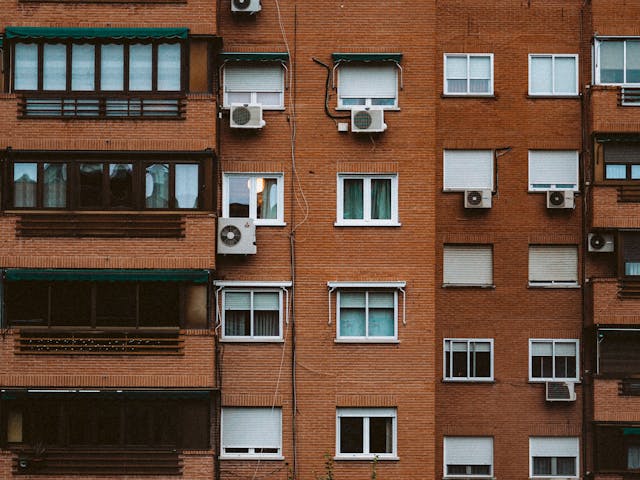Even the most reliable equipment eventually faces wear and tear, and chillers are no exception. These systems are essential for keeping industrial and commercial operations stable, but because they run under constant demand, occasional breakdowns are inevitable. A malfunctioning chiller can disrupt production, waste energy, or even cause costly downtime. For businesses relying on temporary cooling support, ensuring smooth operation is critical. Whether chillers are used to supplement existing systems or serve as the primary cooling source, understanding why problems occur and how they are typically resolved is the first step toward avoiding prolonged interruptions. For readers who want a more detailed look into rental options and cooling solutions, aercosystems.com provides practical insights and resources.
Why Chillers Run into Trouble
Chillers are often pushed into demanding environments where they must perform consistently, sometimes under less-than-ideal conditions. In rental scenarios, they are quickly deployed to handle urgent needs, which can increase the likelihood of small performance hiccups. While most portable units are engineered for rugged duty, factors like fluctuating power quality, restricted airflow, or refrigerant imbalances can trigger malfunctions. These issues are not always catastrophic but can significantly reduce efficiency or force unnecessary shutdowns.
For operators, knowing these potential weak spots is crucial. It allows them to recognize early warning signs, maintain productivity, and prevent minor setbacks from escalating into costly failures.
The Most Common Problems with Chillers
There are recurring patterns when it comes to chiller malfunctions. By understanding these patterns, maintenance teams can anticipate challenges and apply fixes quickly.
High-Pressure Shutdowns
One of the most frequent issues occurs when a chiller’s condenser cannot release heat effectively. This results in rising pressure within the system until it reaches a level that triggers a shutdown. Causes often include dirty condenser coils, blocked airflow, or even environmental conditions that make heat rejection more difficult. The solution usually involves cleaning or repositioning equipment, improving ventilation, and ensuring the condenser operates within the correct range.
Low Suction Pressure
On the other end of the spectrum, low suction pressure can create performance losses and inefficient cooling. It typically stems from low refrigerant levels, clogged filters, or restrictions in the system. A technician will check for leaks, clean or replace filters, and verify that the evaporator loop is functioning correctly. Once the blockage or loss is resolved, the system pressure stabilizes and performance returns to normal.
Refrigerant Leaks
Despite advances in sealing and system design, refrigerant leaks remain a frequent problem. Leaks can originate from worn seals, vibration-related stress, or aging connections. Even small leaks cause efficiency to plummet over time, leading to inadequate cooling and higher energy costs. Skilled technicians rely on electronic detectors and pressure checks to find the leak, then repair and recharge the system to restore performance.
Electrical Faults
Chillers rely heavily on electrical components, which means wiring errors, faulty terminals, or power fluctuations can bring them offline in an instant. Sometimes these faults are caused by moisture, poor grounding, or external power supply issues. A thorough inspection typically includes checking terminal torque, confirming proper grounding, and testing for phase balance. Addressing these problems not only resolves the immediate fault but also prevents repeat failures.
Sensor and Control Calibration Errors
Modern chillers depend on sensors that monitor variables like pressure, flow rate, and temperature. If these sensors drift out of calibration, the system may misread conditions, leading to false alarms or poor adjustments. This can cause short cycling, freezing, or even an unnecessary shutdown. Recalibrating or replacing faulty sensors often brings the system back to steady operation. Regular calibration checks are one of the simplest but most effective preventive measures.
The Value of Preventive Maintenance
Most of these issues are preventable with consistent monitoring and proactive care. Simple steps like keeping condenser coils clean, checking refrigerant levels, and verifying electrical connections extend the lifespan of the unit and keep performance consistent. For rental chillers in particular, preventive checks before and after deployment help ensure each unit is ready for high-demand use.
Instead of treating problems as unavoidable, facilities benefit from adopting a maintenance-first mindset. By doing so, they minimize costly interruptions, keep production running, and get the most value from their rental investment.
Why Expert Support Matters
While operators can handle some basic troubleshooting, the complexity of chiller systems means that expert oversight is invaluable. Trained technicians not only fix immediate problems but also ensure the entire system is configured correctly. They can spot potential trouble areas before they escalate, recalibrate controls for precision, and test performance under load to confirm reliability.
This professional approach is especially important in industries where downtime translates directly into financial losses. Having access to skilled support means that when a chiller is pressed into service, it performs as expected from the first hour of operation.
Staying Ahead of Chiller Challenges
Ultimately, chillers are reliable workhorses, but like all equipment, they need attention to stay at peak performance. By understanding the most common problems and recognizing early warning signs, businesses can avoid major disruptions. High-pressure shutdowns, low suction pressure, refrigerant leaks, electrical faults, and sensor calibration errors may sound technical, but they all share one common theme: with the right maintenance and timely troubleshooting, they are manageable.
For businesses that rely on temporary cooling, adopting this proactive mindset makes the difference between smooth operations and frustrating downtime. Rental chillers are designed to step in when reliability is critical, and with proper care, they can deliver dependable results even under heavy demand.
Cooling is the backbone of many industrial and commercial processes, which means that when a chiller struggles, the entire operation can suffer. Staying aware of common problems and addressing them quickly not only keeps systems efficient but also protects productivity. By combining preventive care with expert support, businesses can keep chillers running at their best and avoid the ripple effects of downtime.



